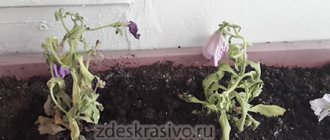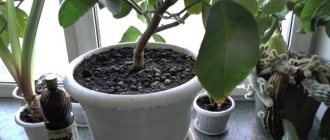How many days after planting does petunia begin to bloom?
Petunia is a popular garden and indoor plant, has a long flowering period and is unpretentious to grow. Many gardeners plant it on their plots every year and use it to create landscape design.
In order for petunia flowers to appear as early as possible (late May - early June), it is important to know that it has a long growing season. Depending on the variety, at least 2.5 months must pass from the emergence of seedlings to flowering. For this reason, it is advisable to start sowing the plant for seedlings in winter, in the second half of February. But in this case, it will be necessary to provide the sprouts with additional lighting. Daylight hours should last about 12 hours. If this is not possible, the seeds are planted at the end of March, but then the first flowers should be expected by June.
Comment! When purchasing ready-made seedlings, it is advisable to give preference to seedlings with buds.
Frequency of feeding – 2 times a month
Why doesn't petunia bloom?
Sometimes it happens that petunia does not bloom after planting. There are several reasons why, at first glance, such a non-capricious plant may not form buds. Even the slightest failure to follow the rules of caring for a crop can slow down its growth and lead to a lack of flowers.
Poor quality soil
An important rule for growing petunia is to provide it with suitable soil. If the foliage of the bushes turns yellow and there is no flowering, then the soil in which they grow is probably not of very high quality. For this crop, fertile and loose soil is considered the most suitable. Loams should be enriched with sand, fertilizers, compost or humus. Sandy soil needs the addition of black soil and peat.
If the soil is selected correctly, then the reason for the lack of flowering lies in something else.
Nutrient deficiencies
Petunia loves fertilizers very much. Experienced summer residents say that for abundant flowering it is advisable to feed it 2-3 times a month. The culture responds best to mineral complexes (Kemira, Pokon, Agricola, Forte). During feeding, it is advisable to alternate watering with useful solutions and spraying.
Rain and lack of sunny days lead to a delay in the development and growth of petunia
Adverse weather conditions
Often petunia growing in open ground blooms poorly due to bad weather. The number of buds is greatly influenced by rain, lack of sunny days, and low air temperature (+20 degrees). Such factors can lead to a stop in development, and even to a lack of flowering.
Lack of light
The plant often suffers from insufficient light, especially for petunias grown at home. With short daylight hours, its bushes gradually begin to stretch out and form very small buds. The culture requires diffused lighting, lasting at least 12 hours.
Why don't petunias bloom in flowerpots?
Typically, problems with flowering appear in petunias that grow in flowerpots or pots. The reason for this is insufficient strength for growth. The crop has a branched and powerful root system and requires a large volume of soil for normal functioning. To grow one strong plant, you need a pot of 5 to 8 liters. Moreover, so that the flowers do not suppress each other, the containers should be placed at some distance. If you grow petunia on a balcony, then as it grows you will have to replant it, cutting off the roots:
- the plant, after the first wave of flowering has passed, is taken out of the container;
- roots and stem are removed by 1/3;
- After pruning, the seedling is placed in new soil and a larger pot;
- sprayed with a growth enhancer and watered.
Advice! After replanting the plant, it is useful to add nitrogen fertilizers to the soil, and before flowering - phosphorus and potassium fertilizers.
Potted petunia often does not bloom due to the small container
Inaccuracies in care that affect flowering
The flowering of petunia also depends on proper care of the plant.
Very often problems arise as a result of:
- Minus moisture . Petunias need to be watered constantly, especially adult specimens, without allowing the soil ball to dry out completely.
- Disadvantages of food . Before and during flowering, it is worth feeding the plants with potassium-phosphorus preparations to stimulate the formation of buds.
- Minus lighting and heat . Petunias need excellent lighting and a temperature of at least 23 degrees Celsius. If plants are planted on an open balcony in early spring, they may freeze at night.
During flowering, you need to constantly pick off faded buds. This will activate the formation of new inflorescences.
Why did petunia stop blooming?
Sometimes it happens that petunia, which bloomed well at the beginning of the season, stops setting buds by mid-summer. This can be caused by several factors that are usually associated with improper care. If mistakes are corrected in a timely manner, flowering can be restored.
Neglecting to remove faded buds
If you do not pick off flower stalks that have faded in time, you can damage the flowering petunia. The plant will begin to form seed pods, causing new buds to form slowly.
Attention! Even hybrids that do not produce seeds will tend to produce them.
Lack of nutrition
If you do not apply fertilizing on time or give it in insufficient quantities, petunia will quickly exhaust the soil resources. This will lead to its poor flowering or its cessation. Gardeners advise alternating watering with water and fertilizers, and use:
- for growth - fertilizing with nitrogen;
- for planting flowers - solutions with phosphorus and potassium;
- for a flowering bush - mineral complexes.
Not enough space
Often the reason for the inhibition of cultural development is a small amount of land. Petunia should not be planted close to each other. And if grown in a pot, one bush must be provided with at least 2 liters of capacity. If the planting becomes very dense, the plants should be thinned out. If there is insufficient space, development will slow down and flowering will stop. In addition, strong specimens will suppress weak ones.
It is necessary to avoid dense plantings
Pests and diseases
The plant may stop blooming due to disease or pest attack. Most often, petunia is susceptible to the following ailments:
- Powdery mildew. Signs of the disease are the appearance of a white coating with a specific odor on the leaves. As the disease progresses, they begin to wither, curl and fall off. Petunia does not bloom and dies. To cope with the disease, it needs to be treated with special drugs (“Sulfarid”, “Topaz”, “Topsin-M”).
- Spider mite. A dangerous insect that leads not only to a lack of flowering, but also to the death of the plant. It should be combated with insecticides - “Neoron”, “Aktellik”, “Fitoverm”.
- Whitefly. A pest that feeds on plant sap. Fitoverm or Aktar can help in the fight against the parasite.
- Aphid. It infects the flower with fungal diseases, which lead to the buds drying out and falling off. Folk remedies and ready-made preparations help get rid of insects.
Prevention and cures for diseases
Why do Chinese rose leaves or hibiscus disease turn yellow?
Petunia diseases and the fight against them are determined by the rules of care and growth. In order not to provoke the development of diseases, it is necessary to take preventive measures. You can make your own pest control product; folk recipes are quite effective.
How to treat with folk remedies
It is not necessary to buy products in specialized stores; you can use available products. You can fight diseases using folk remedies:
- infusion of garlic (dissolve 20 g of garlic in 1 liter of water), which should be sprayed on the bush. It will save you from various pests;
- soda ash (20 g) + dishwashing liquid (5 g) + water (5 l). Treat the soil and bush with the resulting composition;
- mustard powder (20 g) + 5 liters of water. The product is sprayed onto the plant using a spray bottle.
A variant of a folk remedy for pests
There are a huge number of similar recipes that differ in effectiveness and method of application.
How to make petunia bloom
In order for petunia to bloom long and profusely, you need to plant the plant and care for it according to the following rules:
- Provide enough space for the root system. Adult specimens have spacious roots, so when planting seedlings, it is important to maintain a distance between each bush of at least 15 cm. When planting hanging or cascading varieties, the volume of soil for one plant should be at least 10 liters.
- Plant petunia in good quality soil. The plant requires breathable, loose soil that can transmit and retain moisture. It is good to add wood ash, humus and peat to the soil.
- Carry out regular watering. Petunia does not like the soil to dry out. Bushes that grow in pots or flowerpots need to be watered daily, in flower beds as needed. The water should be warm. Watering is carried out strictly at the root. Warning! Overmoistening and stagnation of moisture should not be allowed. Petunia boxes must have drainage holes.
- Add fertilizer. The crop will bloom well only with frequent (once a week) fertilization. You can use complex additives that contain potassium, phosphorus and some nitrogen. In addition, it is worth adding “Ferovit” to the soil 3 times per season.
- Form bushes. Almost all varieties of petunias require a neat shape. Cascading and ampelous species are pinched, bush species are trimmed.
- Removing faded buds. To ensure that petunia blooms abundantly, you should regularly pick off flowers that have wilted. If you allow them to form seed pods, then the plant’s energies will be directed not to flowering, but to the development of seeds.
Petunias love spraying with weak solutions of complex fertilizers
Advice from experienced flower growers
Attention and conscientious care are the main things that petunias need, like any flower. But there are some nuances that help to grow beautiful flowering plants. Experienced flower growers willingly share them:
- Petunia seedlings need acidic soil. For sowing and further cultivation, you can take special soil for cacti or simply acidify the existing soil mixture. You can add a little wood ash.
- When picking seedlings, it is better not to pinch the root, so as not to harm the small seedlings. The petunia root system grows well without this technique.
- Stretching of shoots is a sure sign that the plants do not have enough light. Petunias need abundant lighting at all stages of development, therefore, when sowing seeds early (in February), the lack of sun is compensated for by illumination with fluorescent or LED lamps. This is especially true when the seedlings are placed on northern or eastern windows.
- It will not be possible to grow healthy and strong plants without hardening, especially in the northern regions. The sprouts are taken out into a cool room with a temperature of about +10°C, first for 15 minutes, then added every day for 5 minutes. Hardening strengthens the immunity of plants and prepares them for temperature changes.
- Petunia should not be planted densely at the seedling stage. Even if you pinch the seedlings correctly and in a timely manner, they will have little room to grow into lush bushes.
What to do if petunia doesn't bloom well
If the bushes have poor flowering, then you should correctly determine the cause of this deficiency and try to eliminate it:
- When a flower grows in a small pot, it needs to be replanted in time.
- For dense plantings, it is recommended to thin out the flower bed.
- If there is a lack of sunlight, petunias need to be provided with additional lighting or moved to a brighter place.
- If there is a lack of nutrients, feed the crop with potassium fertilizers.
Attention! Petunias growing in unsuitable soil may have poor flowering. The soil in which it grows should contain sand, peat, vermiculite or perlite.
Reproduction
Regular petunia is grown using seeds and vegetatively. Hybrids are not propagated by seeds - the plants will not have maternal properties. In this case, propagation is possible only with the help of cuttings.
In order for the plant to bloom early, the seeds need to be sown in prepared soil in late February - early March.
To do this, purchase a special soil mixture or prepare it yourself.
It is recommended to take 2 parts of humus, 2 parts of peat and one part of turf soil mixed with wood ash.
Seeds mixed with sand are sown on abundantly moist soil. You cannot sprinkle soil on top because the seeds are too small and may not germinate. The planted seeds are sprinkled with water (possibly a solution of potassium permanganate) and covered with film or glass.
After 2-4 true leaves have appeared, the sprouts are transplanted into plastic or peat cups.
Flowers can be planted in a permanent location in May, when the threat of night frosts has passed.
To plant the hybrids you like from the mother bush in early spring, cuttings are cut and rooted, which begin to delight with riotous flowering already in May.
TIP : since hanging bushes can be difficult to prepare for wintering, it is best to cut and root the cuttings in August. And in the spring, cuttings can be prepared from these young plants again.











